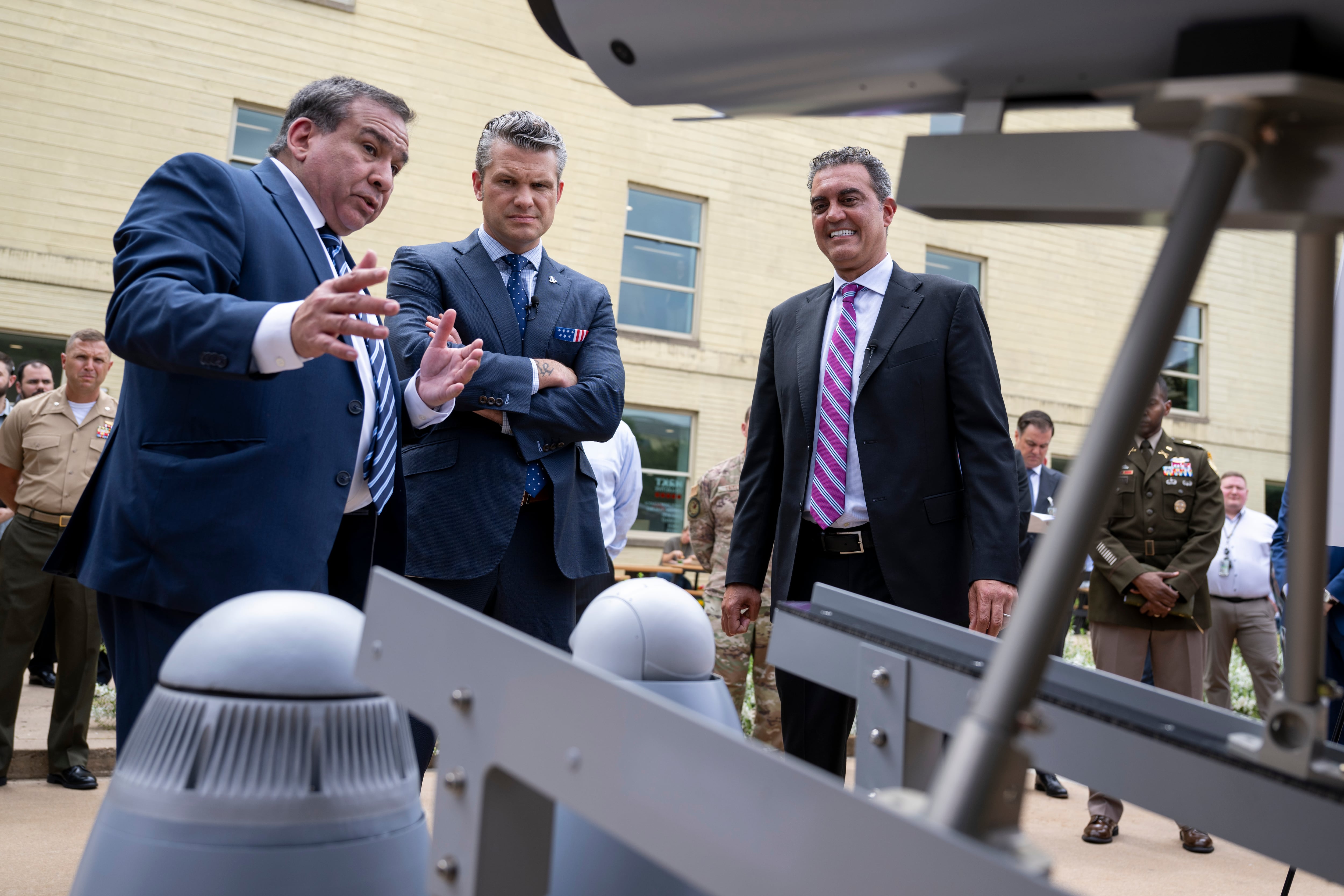It’s well known that the U.S. military needs to improve data-sharing capabilities on the battlefield. What is less appreciated, however, is that its allies and partners also need to be persuaded to do so.
Indo-Pacific Command leaders are finding that bilateral and multinational exercises offer a good opportunity to demonstrate the benefits of mission partner environments, or MPEs, the digital networks that make sharing and collaborating much easier. With their example, it’s possible that other militaries will realize the advantages that an MPE offers.
The goal is to advance to a point where a coalition mission member feels comfortable operating off command and control intelligence and other data from partner systems.
Currently, U.S. collaboration, C2, and fire control systems are network-centric and stovepiped with a predetermined set of coalition partners. If a new coalition partner is needed, it may take weeks or months to establish a network-centric sharing environment that provides basic human-to-human collaboration systems. In some cases, it can even take years to connect sensors and weapons systems among the different participating countries.
With current and near-term technological advances, the U.S. and its coalition partners can embrace modern data-sharing technologies and modify information sharing policies to significantly improve the Observe, Orient, Decide, Act, or OODA, loop timeline. Centricity will make sensing, sharing of data, targeting, and decision-making faster than ever before and will be a true mission advantage.
The good news? Progress is already being made across the different combatant commands, or CCMDs.
Using data-sharing in Indo-Pacific to improve collaboration
Because of its complexity, INDOPACOM could serve as a microcosm for building and testing a data-centric MPE that meets the all-domain information sharing requirements of the regional combatant commands.
Information sharing in the Indo-Pacific area of responsibility is extremely complex because it lacks a regional collective security construct (like NATO) and requires multiple regional bilateral and multilateral cooperation agreements to share even basic information. Systems for sharing information with allies and partners have been built in a similar bespoke fashion, using separate networks to ensure segregation of data.
With near-peer threats on the rise, there’s an urgent need to unlock data from its current network-centered construct and move it to modernized, data-centric networks. This will require a level of mutual respect and trust with partners.
Building and testing a data-centric MPE in INDOPACOM can serve as a model for CCMDs on how to work through information sharing challenges. What has worked well to date is a focus on experimentation, training events, and collaborative drills that involve MPE components.
However, that’s not enough to satisfy the development of more robust capabilities for the CCMDs.
Collaborative exercises to drive trust
The U.S. Department of Defense has relied on building trust in technology and interoperability standards through consistent experimentation with allies and mission partners. Within the INDOPACOM region, military exercises have served as proof of concepts for new ways of sharing data and information across a myriad of different scenarios (e.g., near-peer adversaries, multi-Commands, Allies and a vast number of MPs).
Now, we’re seeing collaborative exercises starting to incorporate data-centric technologies and procedures. For example, Bold Quest 21 included a MPE interoperability event to evaluate the SABRE (Secret and Below Releasable Environment) concept of exchanging information with partners over distance. In addition, Project Convergence 22 is a massive event expected to help drive new standards for interoperability.
Indo-Pacific’s exercises including Rim of the Pacific, or RIMPAC, the world’s largest international maritime exercise, can serve as a venue to introduce data-centric technologies and approaches with a large multi-national force. Lessons learned from the exercises will inform much needed information sharing policy changes and required technical agreements for the future.
Further, seeing these new technologies and standards at work can help alleviate reservations about Mission Partners’ cyber hygiene and implementation of multi-national technology standards.
As we exercise these technologies around zero trust and data-centric security, the DoD can demonstrate to partners that, together, we can become more operationally effective and cyber-resilient. Importantly, these new technologies can provide commanders with the ability to grant access to mission-relevant information at the scale they need to – down to sharing just one memo or specific information datasets.
Audit trails can be created for each usage, recording who accessed specific data products and what they did. Once a mission is complete, access can be automatically removed. While in the prototype stage, these data-centric technologies will demonstrate to both U.S. commanders and our partners that precise data control at scale is possible.
This will not be an easy endeavor.
Initial information sharing efforts should be rooted in improving the trust among coalition partners and linking operational processes with shared commercial technologies. From there, technologies can be exercised within the INDOPACOM and other regional commands and ultimately provided to U.S. and coalition warfighters.
Mariel Cooley is Vice President at Booz Allen Hamilton, a defense contractor and business consulting firm.
Have an Opinion?
This article is an Op-Ed and the opinions expressed are those of the author. If you would like to respond, or have an editorial of your own you would like to submit, please email C4ISRNET and Federal Times Senior Managing Editor Cary O’Reilly.








